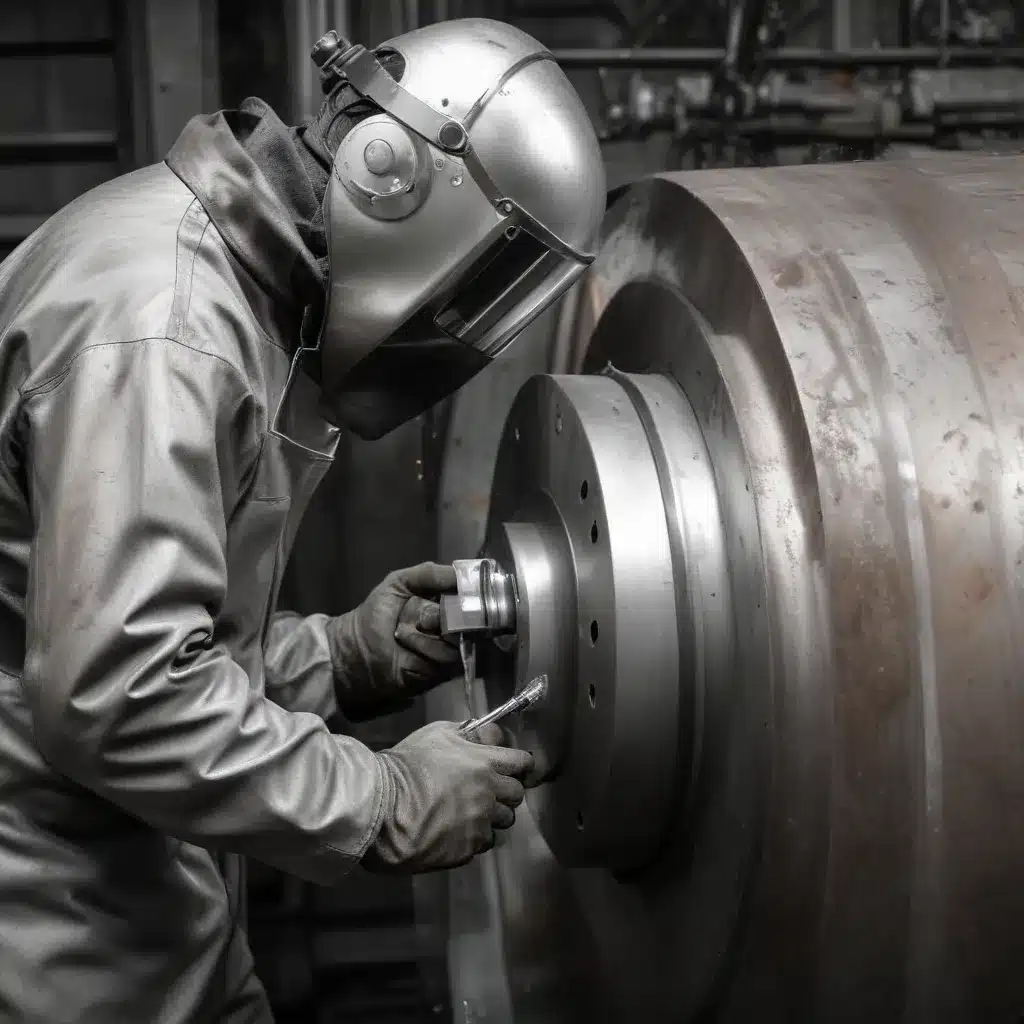
Understanding the Unique Challenges of Martensitic Stainless Steels
As an experienced welder and metal fabricator, I’ve had the opportunity to work with a wide range of materials, each with its own unique set of characteristics and requirements. One steel that has particularly captured my attention over the years is the elusive and tricky-to-handle martensitic stainless steel. These alloys present a unique set of challenges that, when overcome, can unlock a world of precision and high-performance metalworking solutions.
Martensitic stainless steels are known for their exceptional hardness, strength, and corrosion resistance – qualities that make them invaluable in a variety of industries, from aerospace and defense to oil and gas. However, their martensite-dominant microstructure also means they can be incredibly difficult to weld, with a high risk of cracking, distortion, and other defects if the proper techniques are not employed.
As I’ve navigated the complexities of working with these steels over the years, I’ve developed a deep appreciation for the nuances involved in achieving successful welds. It’s a constant balancing act, requiring meticulous attention to detail, a thorough understanding of the material’s properties, and a keen eye for anticipating and mitigating potential issues.
Unraveling the Metallurgical Mysteries
At the heart of the challenges posed by martensitic stainless steels lies their unique microstructural composition. These alloys are primarily composed of a hard, brittle phase known as martensite, which forms when the steel is rapidly cooled from its austenitic state.
The formation of martensite is a critical phase transformation that occurs during the welding process, and it’s this rapid transformation that can lead to a host of problems if not properly managed. The high carbon content and rapid cooling rates associated with welding can result in the creation of a brittle, untempered martensite microstructure, which is highly susceptible to cracking and distortion.
To combat these issues, I’ve learned that a deep understanding of the ironcarbon phase diagram and the factors that influence microstructural evolution is essential. By carefully controlling the welding parameters, such as heat input, interpass temperature, and cooling rates, I can tailor the microstructure to achieve the optimal balance of strength, ductility, and corrosion resistance.
Adapting Welding Techniques for Martensitic Stainless Steels
One of the primary strategies I employ when welding martensitic stainless steels is the use of a carefully selected filler material. The choice of filler metal is crucial, as it can significantly impact the resulting weld microstructure and properties. I often opt for low-carbon, nickel-based filler alloys that can help counteract the tendency towards brittle martensite formation.
Additionally, I’ve found that preheating the base material before welding is a critical step in managing the thermal stresses and distortion that can arise. By slowly and evenly heating the workpiece, I can ensure a more gradual cooling process, allowing the martensite transformation to occur in a controlled manner and minimizing the risk of cracking.
Another technique I’ve found to be highly effective is the use of multiple weld passes, rather than attempting a single, thicker weld. By building up the joint in a series of thinner layers, I can better control the heat input and cooling rates, leading to a more homogeneous and stable microstructure throughout the weld.
Ensuring Quality and Consistency in Fabrication
Of course, the challenges of welding martensitic stainless steels don’t end with the actual welding process. Ensuring the long-term integrity and performance of the weldment is also a crucial consideration.
To this end, I place a strong emphasis on post-weld heat treatment, which can help relieve residual stresses, temper the martensite, and improve the overall mechanical properties of the joint. By carefully selecting the appropriate heat treatment parameters, I can unlock the true potential of these high-performance alloys, transforming them into robust and reliable components.
But it’s not just the welding and heat treatment processes that require meticulous attention – the entire fabrication workflow must be meticulously managed to ensure consistently high-quality results. From material selection and preparation to precision machining and finishing, every step plays a crucial role in delivering the level of excellence that our clients have come to expect from The Weld Fab.
Embracing the Challenges, Delivering Exceptional Results
As a welder and fabricator, I thrive on the challenges presented by martensitic stainless steels. There’s a certain satisfying sense of accomplishment that comes from mastering the complexities of these materials and delivering exceptional results for my clients.
Sure, it’s not always an easy journey – there are moments of frustration, trial-and-error, and the occasional setback. But it’s those challenges that drive me to continually expand my knowledge, refine my techniques, and push the boundaries of what’s possible in the world of metal fabrication.
And when I see the final product – a strong, corrosion-resistant, and beautifully crafted component that will go on to serve a critical function in an industry-leading application – that’s when I know all the hard work has been worth it. It’s a feeling of pride and purpose that fuels my passion for this craft and keeps me striving for excellence with every project I undertake.
Forging Ahead with Precision and Passion
In an industry that demands ever-higher standards of quality and performance, the ability to reliably weld and fabricate martensitic stainless steels is a true differentiator. By mastering the complexities of these alloys, we at The Weld Fab are able to deliver unparalleled solutions to our clients, unlocking new levels of precision, durability, and innovation.
So, whether you’re working on a high-stakes aerospace project, a rugged oil and gas infrastructure, or any other application that requires the incredible properties of martensitic stainless steel, I encourage you to reach out to us. Together, we can explore the full potential of these remarkable materials and push the boundaries of what’s possible in the world of metal fabrication.
After all, it’s in the face of the greatest challenges that the most remarkable achievements are forged. And here at The Weld Fab, we’re always up for a challenge.


